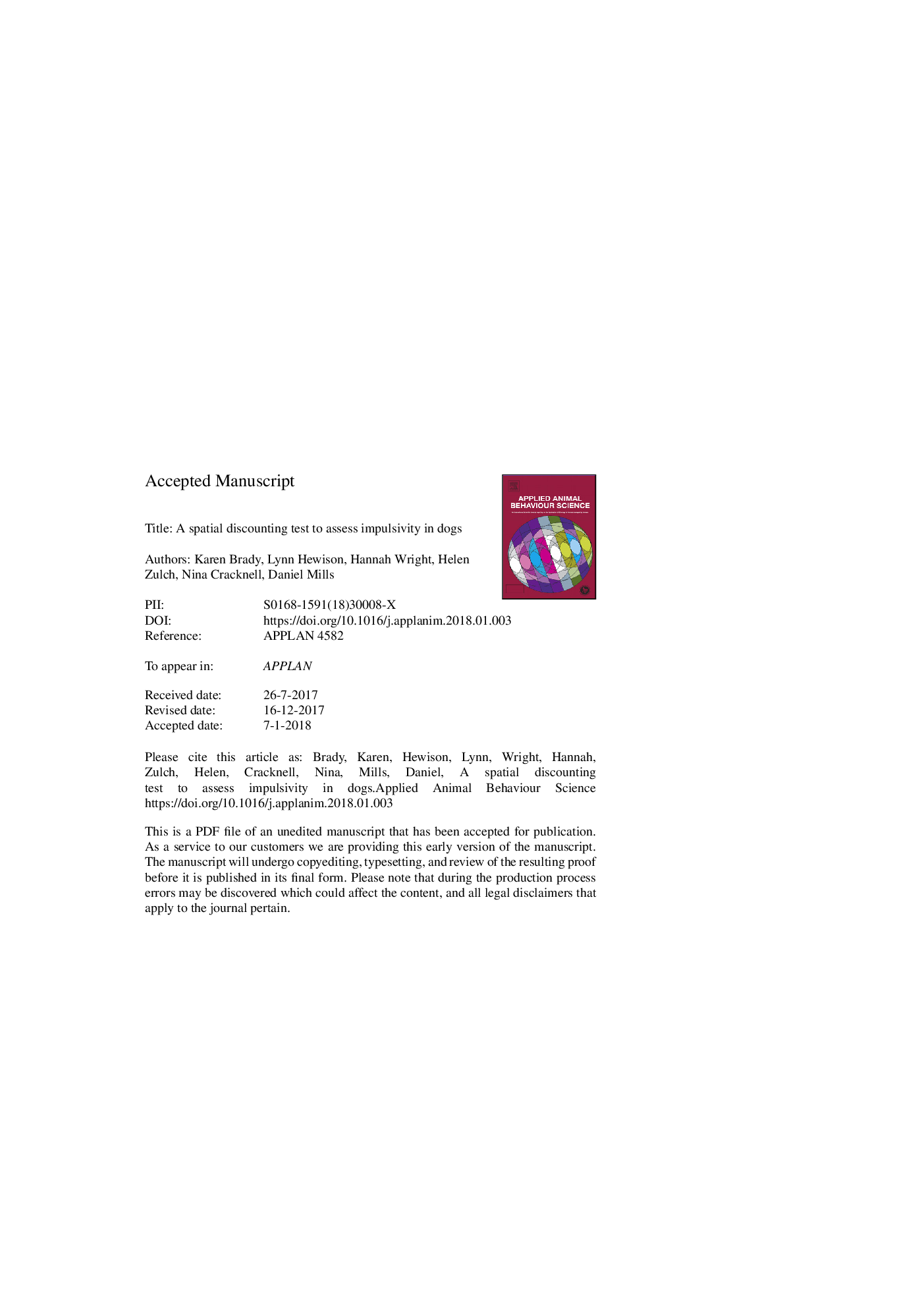| Article ID | Journal | Published Year | Pages | File Type |
|---|---|---|---|---|
| 8882793 | Applied Animal Behaviour Science | 2018 | 34 Pages |
Abstract
In domestic dog's trait impulsivity can be measured psychometrically using the Dog Impulsivity Assessment Scale (DIAS) and experimentally using a temporal discounting paradigm which requires substantial training. A Spatial Discounting Task (SDT) was developed as an alternative experimental method to assess impulsivity, and evaluated performance in adult (2-10 years) and younger (2-9 months) dogs. The test was modified for field use with fewer controls (Simplified Spatial Discounting Task (SDTs)). Convergent validity with the SDT and DIAS Overall Questionnaire Scores (OQS) and stability over time (4-6 weeks) in the two age groups was determined. 96% of dogs recruited reached criterion for testing. A significant positive relationship was found between Maximum Distance Travelled (MDT) in the SDT and OQS in adult dogs (râ¯=â¯0.46, pâ¯=â¯0.028), with good test-retest reliability evident for both (pâ¯<â¯0.001). In young dogs, there was good test-retest reliability for OQS (pâ¯=â¯0.023), but no significant relationship was found between OQS and MDT, test-retest reliability for MDT in young dogs was poor. In the SDTs, 100% of dogs recruited met criterion for testing and there was a significant relationship between MDT and OQS (râ¯=â¯0.61, pâ¯=â¯0.027). The SDT appears to be a useful method for measuring impulsivity in adult dogs with wide applicability.
Related Topics
Life Sciences
Agricultural and Biological Sciences
Animal Science and Zoology
Authors
Karen Brady, Lynn Hewison, Hannah Wright, Helen Zulch, Nina Cracknell, Daniel Mills,
